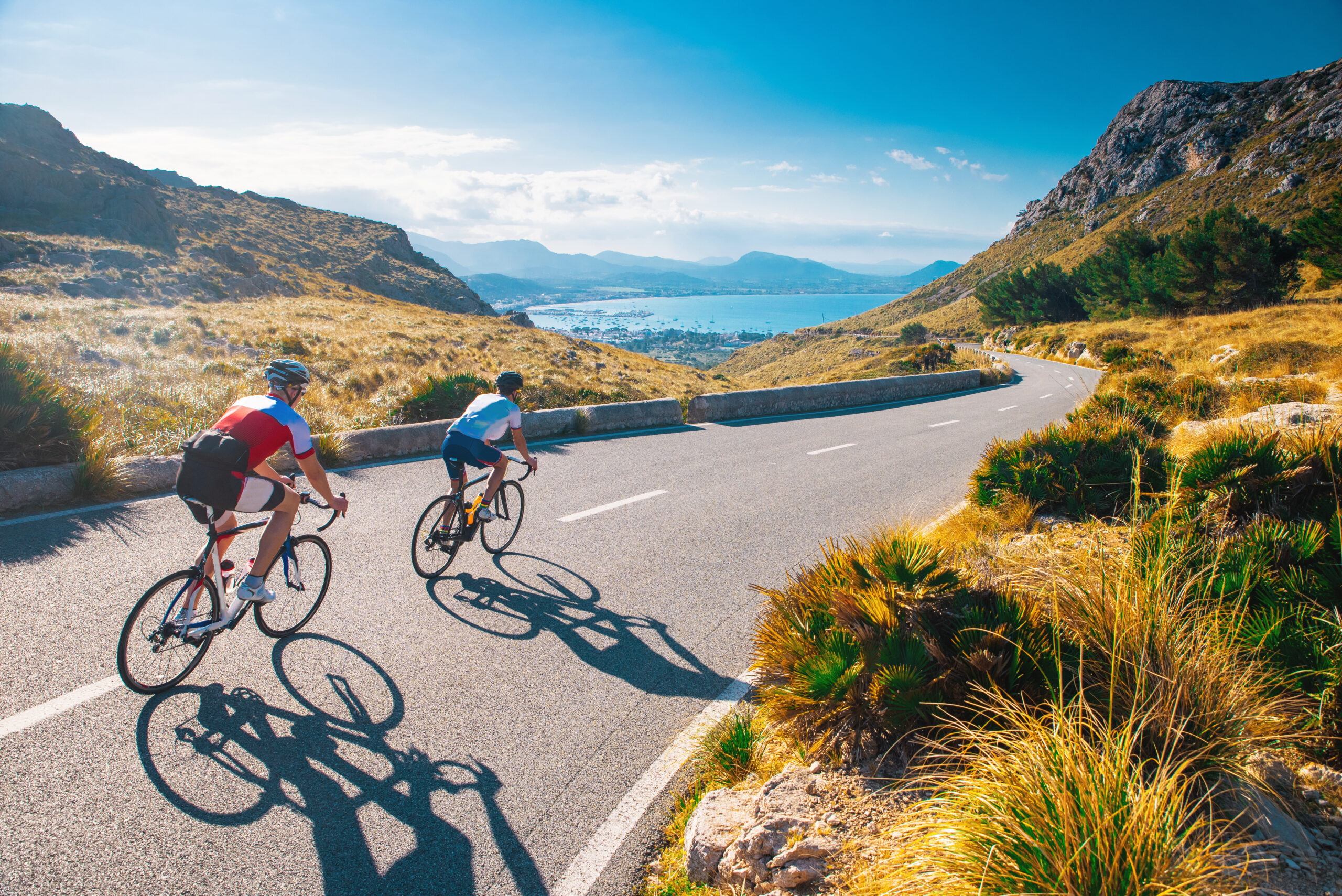Planning a cycling holiday abroad isn’t all that different from organising any other trip, as you’ll still need to sort out flights, accommodation, and maybe a hire car. However, once you add a bike to the mix, things can become a bit more complicated. You’ll need to check airline rules, pack your bike securely and make sure your insurance covers you outside the UK. With a Cover4Cycles policy, you can easily add worldwide cover, so both you and your bike are protected wherever your cycling adventure takes you.
To make things easier, we’ve put together a step-by-step guide to make your international cycling adventure as smooth and stress-free as possible.
Step 1: Decide What Kind of Rides You Want
Before you book anything, you should consider what style of cycling you enjoy the most, as this will have a bearing on your destination.
If you enjoy road cycling, you’re probably after smooth tarmac, scenic climbs and quiet routes. Popular locations include Mallorca, Girona, Lanzarote and the Dolomites.
For mountain biking enthusiasts, you’ll want challenging trails with technical descents, singletracks and alpine scenery. Places like the French Alps, Andorra and Finale Ligure would be perfect.
Gravel and adventure riders can enjoy remote and less crowded terrain in places like Scotland’s North Coast 500, Slovenia or Portugal’s Alentejo.
Other things to consider include:
- Your fitness level – do you want casual or intense rides?
- The terrain and climate – flat or hilly, hot or cool?
- Who you’ll be cycling with – solo, with friends, family or a partner?
- Trip format – do you want a base-camp style or multi-day point-to-point tours?
- DIY vs supported tours: Decide whether you want to manage logistics yourself or use a guided service.
Step 2: Research Bike-Friendly Accommodation
Not every hotel or Airbnb welcomes cyclists, so it’s a good idea to check in advance of booking. Even better if they offer the following:
- Secure bike storage
- On-site maintenance or a workshop space
- Bike washing facilities
- Knowledgeable staff who can advise on local routes
Websites like cyclefriendlyhotels.com and online forums are great resources for finding stays suitable for you.
Step 3: Prepare Your Bike for Travel
The way you transport your bike will depend on whether you’re driving or flying, and transporting your bike safely is essential to avoiding damage.
If you’re driving:
- Roof racks: These keep your boot free but you’ll need to be aware of height restrictions as you’ll have low clearance
- Boot racks: These can block access to your boot and also affect visibility out of the rear windscreen
- Towbar racks: Much more stable and convenient but typically more expensive
If you’re flying:
- Use a hard case or a padded travel bag
- Remove pedals, wheels and the saddle
- Slightly deflate your tyres to avoid pressure problems
- Protect delicate components with foam or bubble wrap
Before packing, make sure to give your bike a thorough check or service to avoid any mechanical problems mid-trip.
Step 4: Essentials to Pack for a Cycling Holiday
A well-packed bag means you’ll have everything you need without any unnecessary weight.
Cycling Gear:
- Helmet
- Sunglassess
- Cycling shoes
- Front and rear lights with spare batteries
- Water bottles and cages
Saddlebag Tools & Spares:
- Pump
- Tyre levers
- Inner tubes
- Multi-tool
- Allen keys
- Torx key
- Chain lube
- Cable ties
- Spare bolts/cleats
- Compact bike lock
Other Useful items:
- Universal plug adaptor
- Suncream
- Insect repellent
- Snacks
- Electrolyte tablets
- Travel insurance documents
- Basic first-aid kit
Step 5: Learn Local Road Rules
Cycling regulations differ widely from country to country. Be aware of:
- Helmet laws
- High-visibility clothing (mandatory in countries like France, Spain, Italy, Portugal and Slovenia)
- Daytime lights for visibility
- Emergency numbers and key local phrases like ‘help’
The European Commission Road Safety for Cyclists is a helpful reference.
Step 6: Plan Your Routes
Mapping your rides beforehand ensures a safer and more enjoyable experience.
- Factor in stops for water, food and sightseeing
- Download offline maps in case of poor signal
- Use apps like Komoot, Strava and RideWithGPS for route planning
Don’t be too strict with your route planning! Leave some flexibility to explore unexpected detours – they sometimes have the best scenery.
Step 7: Insure Your Bike
Not even careful planning can prevent theft, damage or accidents. A Cover4Cycles cycle insurance policy offers worldwide coverage for up to 90 days, so you can have peace of mind even when cycling miles from home. You can include your bike and accessories so you’re fully protected abroad.
In Summary
Cycling holidays abroad offer adventure, exercise, and unforgettable scenery – but a little planning goes a long way. From selecting the right destination and packing efficiently to learning local rules and arranging insurance, these steps will help you enjoy your cycling holiday abroad with confidence.

